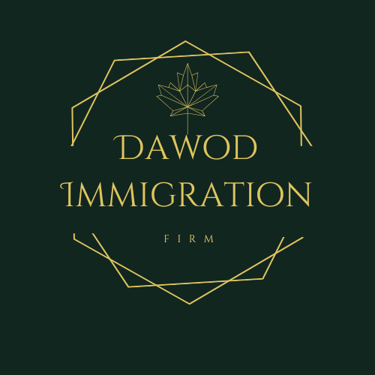Navigating Canada's Immigration: Your Guide to Permits and Residency
Discover essential information on study permits, work permits, and permanent residency in Canada. Our expert guidance ensures you understand eligibility, application processes, and the latest immigration news. Stay informed and prepared for your journey towards a successful future in Canada with Dawod Immigration's comprehensive resources.
3/30/20253 min read


Navigating Canada's Immigration: Your Guide to Permits and Residency
Canada is one of the most welcoming countries for immigrants, offering a variety of pathways for individuals seeking temporary or permanent residence. Whether you are coming to study, work, reunite with family, or build a new life, understanding the different permits and residency options is crucial for a smooth immigration journey. This guide will help you navigate the key programs available and determine the best path for your situation.
1. Temporary Residency: Permits for Short-Term Stays
If you are planning to visit, study, or work in Canada for a limited period, you will need a temporary resident permit.
Visitor Visas and Electronic Travel Authorization (eTA)
Most travelers require a visitor visa or an eTA to enter Canada. A visitor visa allows individuals to stay in Canada for up to six months, while an eTA is an entry requirement for visa-exempt foreign nationals traveling by air.
Study Permits
Canada is home to world-class educational institutions, attracting thousands of international students each year. A study permit allows foreign nationals to study at a designated learning institution (DLI) and often provides the opportunity to work part-time during studies. After graduation, students may be eligible for a Post-Graduation Work Permit (PGWP), which can lead to permanent residency.
Work Permits
Foreign workers can apply for either an employer-specific or an open work permit, depending on their eligibility. Some work permits require a Labour Market Impact Assessment (LMIA), while others are exempt under special agreements or programs. Gaining Canadian work experience can be a valuable step toward permanent residency.
2. Permanent Residency: Pathways to a New Life in Canada
For those looking to settle in Canada permanently, there are several immigration programs that lead to permanent resident (PR) status.
Express Entry
Express Entry is one of the fastest and most popular ways to obtain permanent residency in Canada. It is a points-based system that manages applications for three key programs:
Federal Skilled Worker Program (FSWP) – For skilled workers with foreign work experience.
Federal Skilled Trades Program (FSTP) – For individuals with experience in a skilled trade.
Canadian Experience Class (CEC) – For individuals with work experience in Canada.
Candidates are ranked based on factors such as age, education, work experience, and language proficiency. Those with the highest scores receive Invitations to Apply (ITA) for permanent residency.
Provincial Nominee Programs (PNP)
Each Canadian province and territory (except Quebec) has its own PNP, designed to meet regional labor market needs. Candidates can apply directly to a province or through Express Entry with a provincial nomination, which significantly boosts their chances of receiving an ITA.
Family Sponsorship
Canadian citizens and permanent residents can sponsor family members to join them in Canada. This includes spouses, common-law partners, dependent children, parents, and grandparents. Family reunification remains a priority for Canada's immigration system.
Business and Investor Immigration
Entrepreneurs, investors, and self-employed individuals may be eligible for immigration programs such as the Start-Up Visa Program or provincial business immigration streams. These pathways encourage economic contributions and job creation in Canada.
3. Refugee Protection and Humanitarian Pathways
Canada provides protection to individuals fleeing persecution, violence, or human rights violations. Refugee claimants can apply for protection through the Immigration and Refugee Board (IRB), while other humanitarian and compassionate programs assist vulnerable individuals in need of residency.
4. Canadian Citizenship: The Final Step
After living in Canada as a permanent resident for a certain period (usually three out of the last five years), individuals can apply for Canadian citizenship. Citizenship grants additional rights, such as the ability to vote, obtain a Canadian passport, and participate fully in Canadian society.
Let Dawod Immigration Guide You
Navigating Canada’s immigration system can be overwhelming, but you don’t have to do it alone. At Dawod Immigration, we provide expert guidance to help you choose the right pathway, submit strong applications, and achieve your immigration goals. Whether you need a temporary permit, permanent residency, or citizenship, we are here to support you every step of the way.
Contact us today to begin your Canadian immigration journey with confidence!
